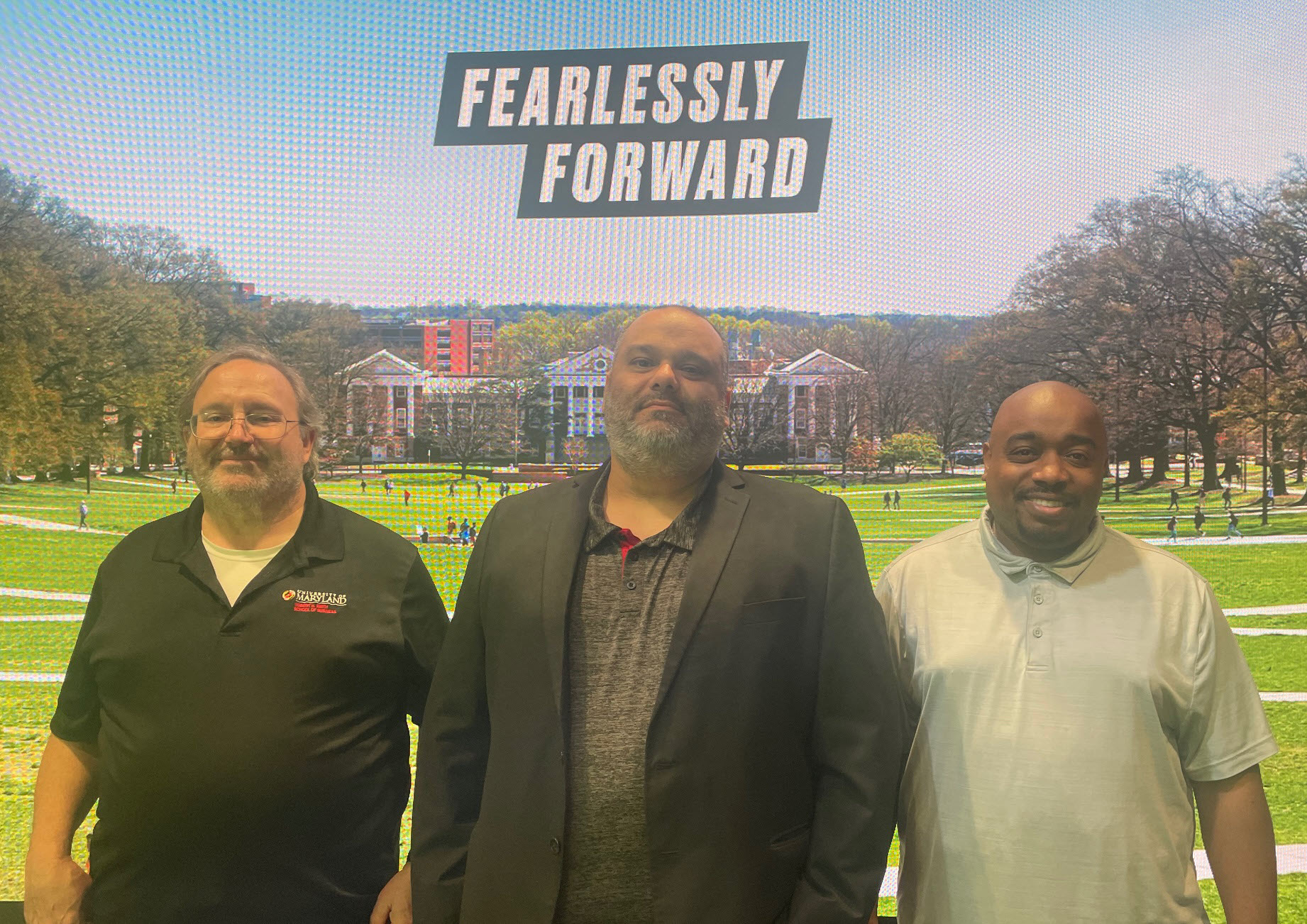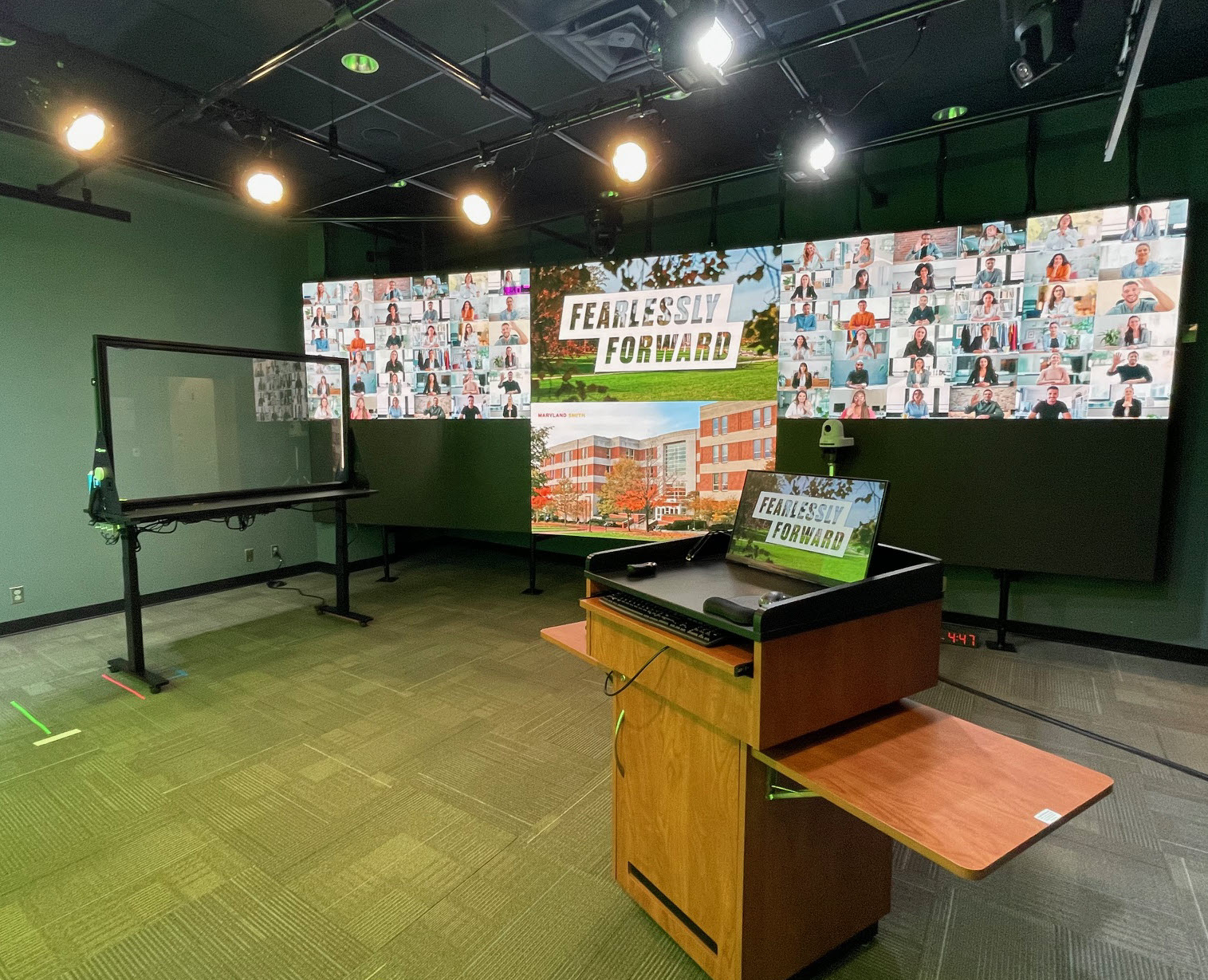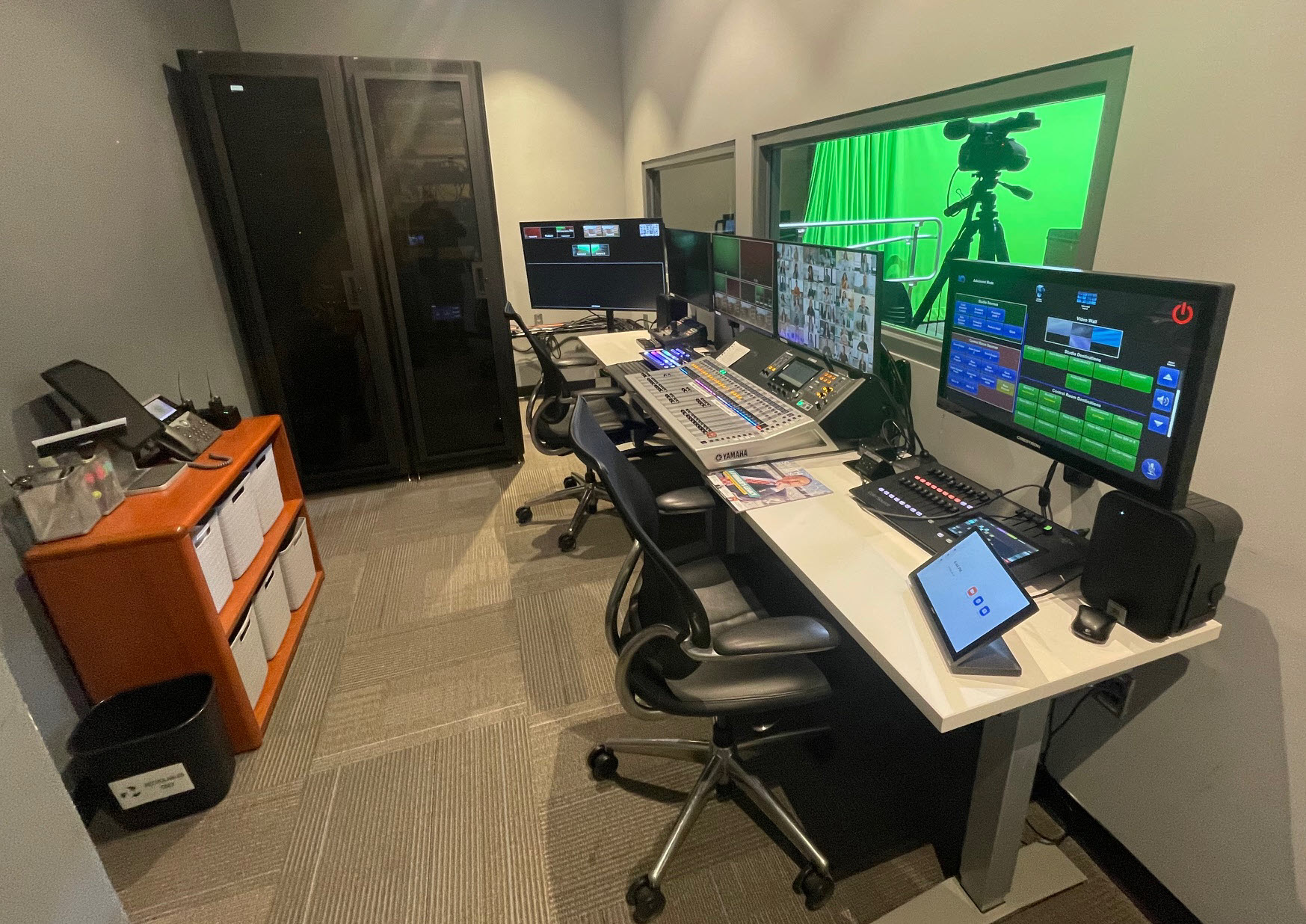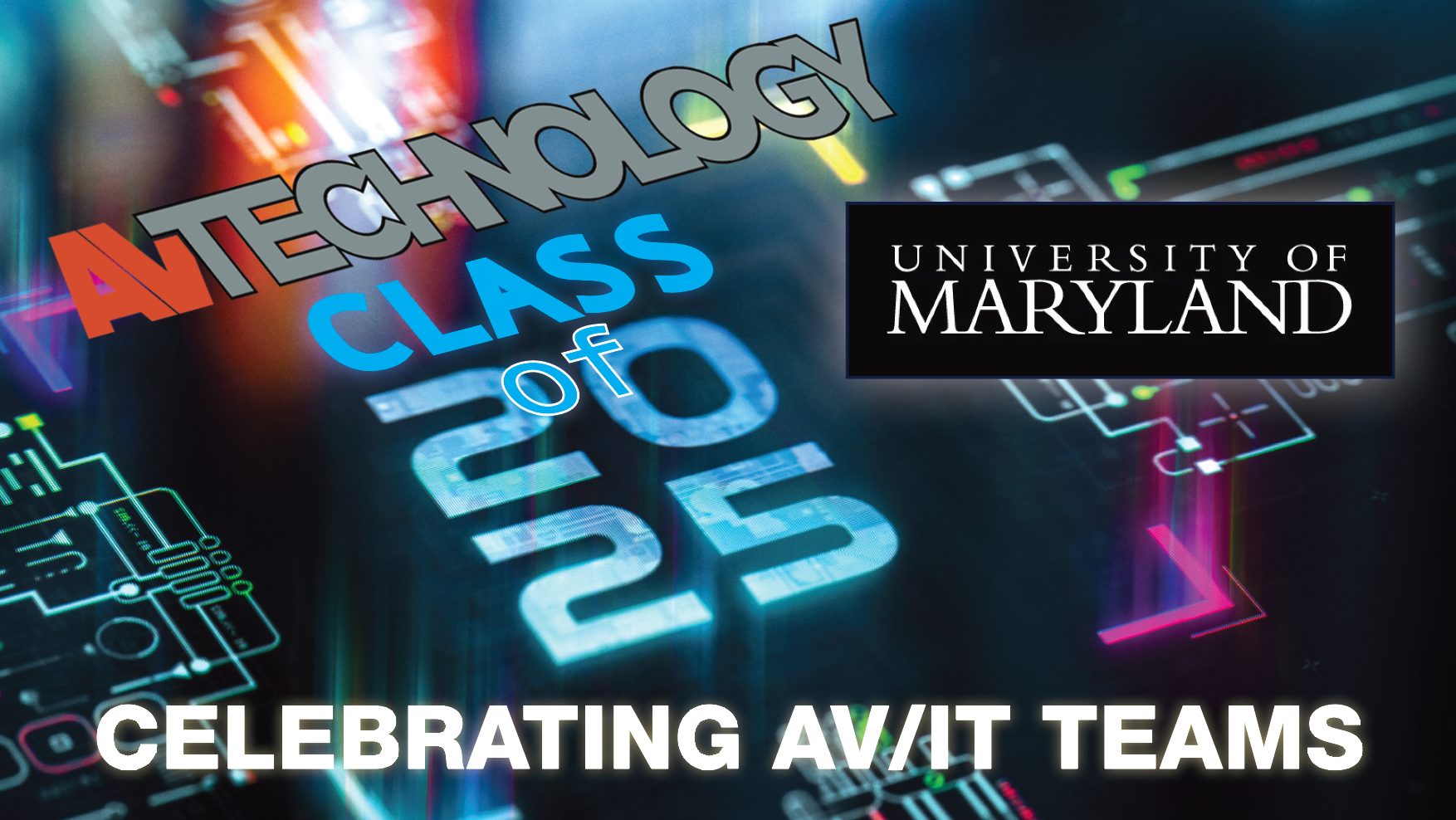AV/IT TEAM:
Left to right: Greg Hull, senior AV specialist; Antonio S. Cipriano, AV manager; Raymond Barnes, senior AV specialist

GOALS: The genesis of this project was a directive from the Smith School’s dean, Prabhudev Konana, to bring more value to the online and hybrid EMBA programs and align with the University’s strategic goal of reimagining learning. After evaluating other universities’ distance learning platforms, the goal was to build an immersive space that would allow instructors to interface with students via state-of-the-art technology and practices. By using technology familiar to faculty, they reduced the need for technical oversight during class, simplified adoption, saved training time, and boosted teaching efficiency. The dynamic and energetic teaching experience that a professor is now able to give over Zoom is unmatched by what they would be able to provide remotely from home.
A key design requirement was operational simplicity. The system would need to be engineered so that it did not require advanced technical expertise to operate. A technician would be able to prepare the room with just a few touches on the control panel, support the instructor before class begins, and then step away while remaining available for assistance as needed.
The space was also designed to provide a more professional environment for the school’s video production and marketing teams. The studio’s lighting and technology can now be leveraged to enhance photography and recording sessions. In that capacity, it has been used in numerous ways.
From a technical perspective, the team sought to create a seamless and immersive dvLED video wall experience that could simultaneously display Zoom participants, the active speaker, and the slide content being discussed by the professor.
For audio, the priority was to maintain mobility and avoid encumbering the professor with wired or wireless lavalier microphones. Instead, the team implemented a zone-based audio solution using a beamforming ceiling-mounted microphone. The goal was to allow the professor to move freely between the podium, lightboard, and green screen area without compromising audio quality.
At the podium, a touch display was installed, enabling real-time slide annotation and intuitive interaction with presentations or applications through natural gestures. Additionally, the team wanted to integrate the Zoom chat window into the video wall, allowing students to engage by asking questions, seeking clarification, or providing feedback in real time. This setup would enable the professor to respond immediately, without needing to return to a separate computer interface.

CHALLENGES: When the AV manager joined the school in September 2023, the project was still in its development phase. After review, it was clear the proposed design needed refinements to enhance its capabilities, improve the intended user experience, and better align with the potential of the chosen technology.
By early 2024, the design underwent a complete overhaul, retaining only the originally proposed studio lighting system. While the initial concept was tailored for a narrowly defined purpose, the revised design is significantly more flexible and dynamic, better aligning with the evolving needs of the program. In short, the final implemented design was designed, procured, and installed in about six months, just in time for the fall semester.
An additional key challenge was aligning the technology with faculty pedagogy to create an optimal teaching experience. Through iterative adjustments to video wall layouts, configurations, and furniture, the team collaborated with faculty to ensure the system supported instructional goals effectively.

Crestron room control, UC Engine; ATS Pro dvLED; Zoom collaboration platform; Shure microphones; Biamp DSP; Yamaha audio mixing; Planar touch monitor; Canon cameras; Sony cameras; Ross Video production switcher; Novastar video switching and dvLED controller; Revolution lightboards
FINAL INSTALL/USER BENEFITS: This space offers a dynamic and immersive environment designed to enhance the learning experience for both instructors and students. Primarily supporting online and hybrid MBA programs, the room provides a significant improvement over traditional remote teaching methods.
Rather than viewing an instructor delivering a lecture from a home office, students engage with a more interactive presentation, where the instructor can move through slides, annotate content in real time, and gesture naturally. The inclusion of a lightboard system further enriches the experience, allowing faculty to visually demonstrate formulas, workflows, and key concepts with clarity.
This setup fosters a more personal and engaging connection between students and faculty, ultimately adding substantial value to the online and hybrid MBA offerings. It exemplifies the innovative approach that distinguishes the Robert H. Smith School of Business from other programs.
